Today we welcome Eugénie Delhaye from the SEO agency My Little Big Web located in Montreal. She talks about the best ways to build optimized content by taking into account search intent.
As you may know, Google uses more than 200 ranking factors to determine which results have the chance to appear in the top positions.
Search intent is a central concept in SEO that, when understood, allows for content optimization according to a set of these criteria instead of optimizing them separately. It is part of the more subtle concepts that need to be well understood in order to effectively optimize content.
As you will see in this article, by taking into account search intent to properly articulate your content, you can build effective content that meets a good number of SEO criteria.
What is search intent?
In simple terms, search intent refers to the answer a user expects to find following a search on a search engine.
For example: a person searching for "pizzeria" is probably looking for a nearby pizzeria, not all the pizzerias in the city.
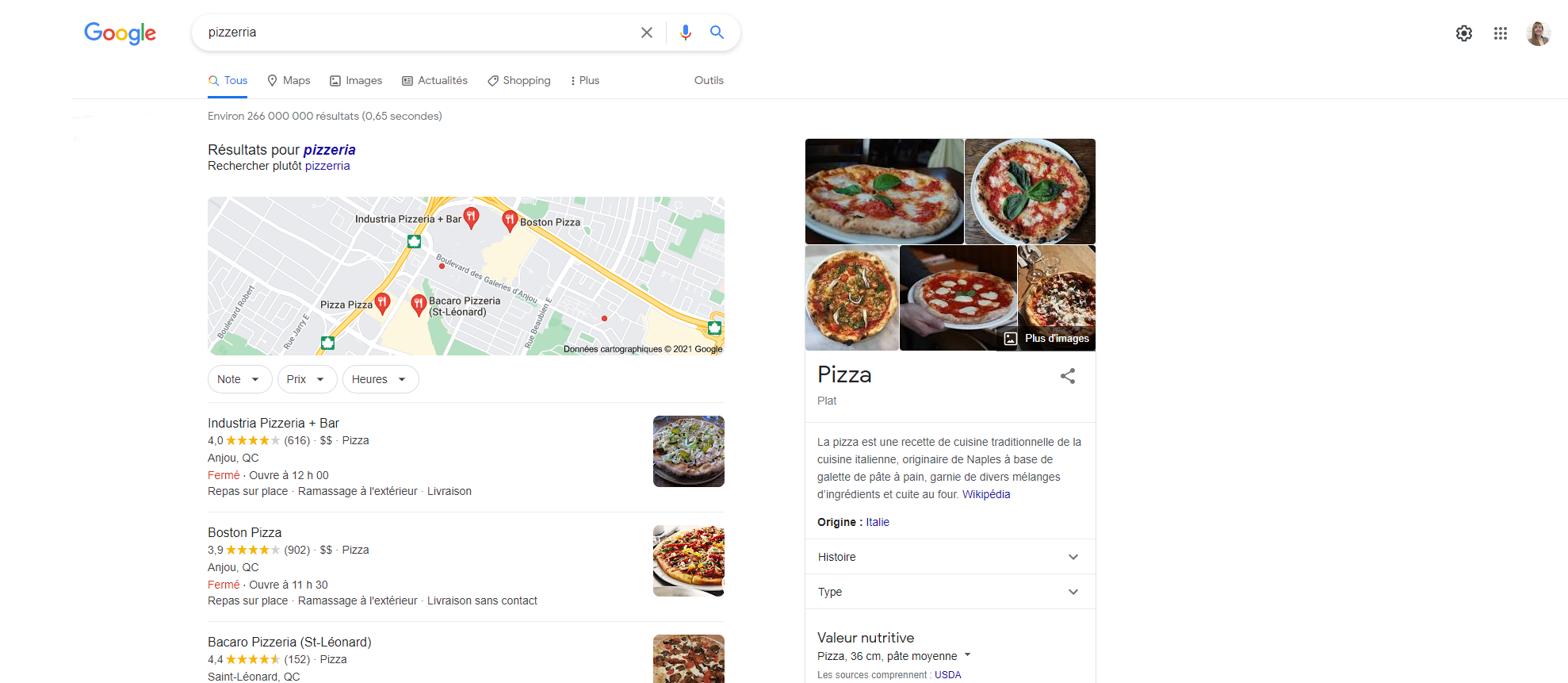
However, just because the definition is simple doesn't mean that search intent is easy to integrate into an SEO optimization framework. To help you understand how to better articulate your content by incorporating search intent, we'll go back to the basics and explain all the subtleties.
How to optimize your content for different types of search intent?
Here's the first subtlety. There are several types of search intent with different objectives and optimization techniques. We can identify 4 types of search intent and as many content optimization strategies.
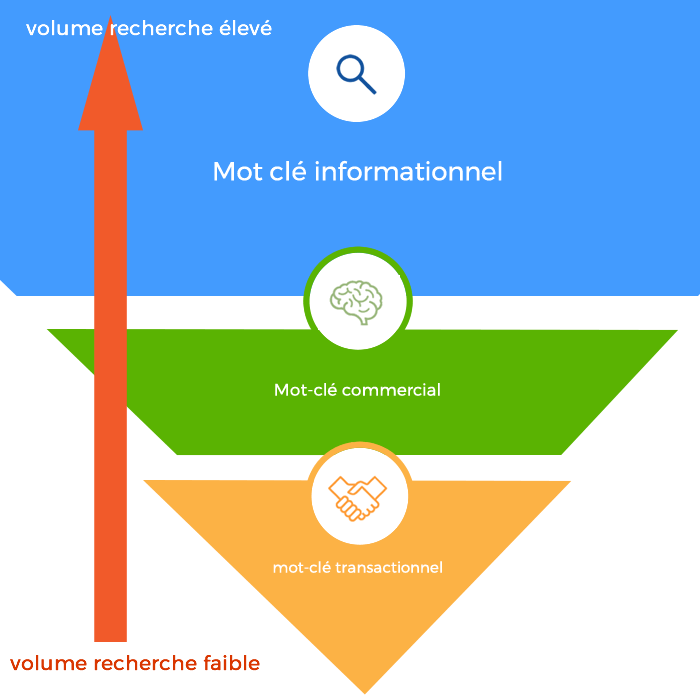
Navigational searches
What is navigational search intent?
Navigational searches are searches used to find a specific site. It is difficult to optimize for this type of search because the user already knows which site they want to land on. For example:
- YouTube
- Google Maps
- Weather Network
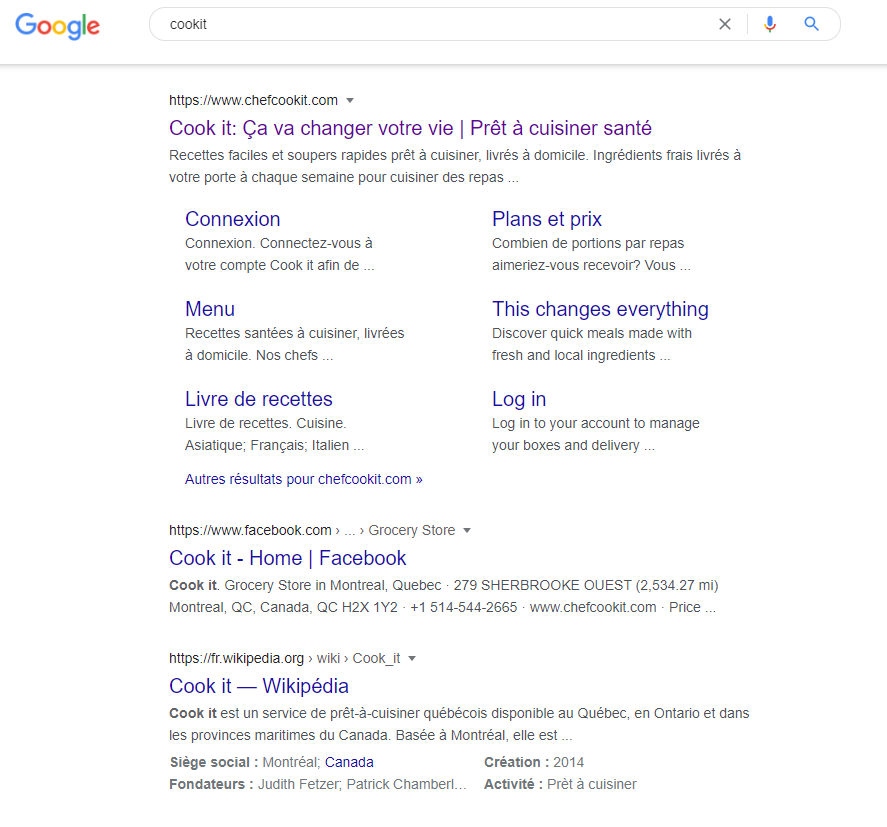
If your site is not exactly the one being searched for, the only way to "use these searches" will be to target them in advertising. Otherwise, your goal will be to optimize your website so that Google understands that when users search for your name, it's you they expect to see.
How do I optimize my content for navigational search intent?
If your goal is to build content to rank for a query with navigational search intent, you will need to apply the same types of optimization as for local SEO.
- Optimize your NAP: Include your name, phone number, and address at least on the contact page and homepage. For safety, you can also insert them in the footer, but be aware that it has less value than in the body text.
- Local directories: Register your site (with address and phone number) on local directories to help Google understand the local scope of your business.
- Work on the "strength" of your name: Make sure your name is associated with your business. To check, it's very simple! Search your name in Google and see which organic result appears first. Here, we want your site to appear first. If it's not the case, you need to work on your business's credibility so that Google associates your name with your website.
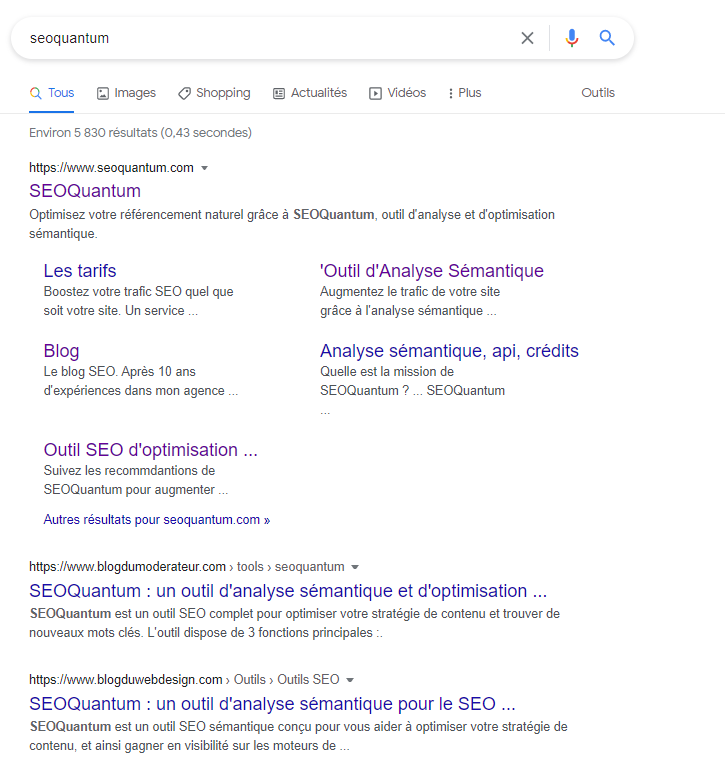
Informational searches
What is informational search intent?
Informational searches are used to learn more about a topic. They include all "How to" searches such as:
- How to install drywall?
- How to clean a strawberry stain?
- How to do my accounting?
- How old is the Queen of England?
- Who is Elvis Presley?
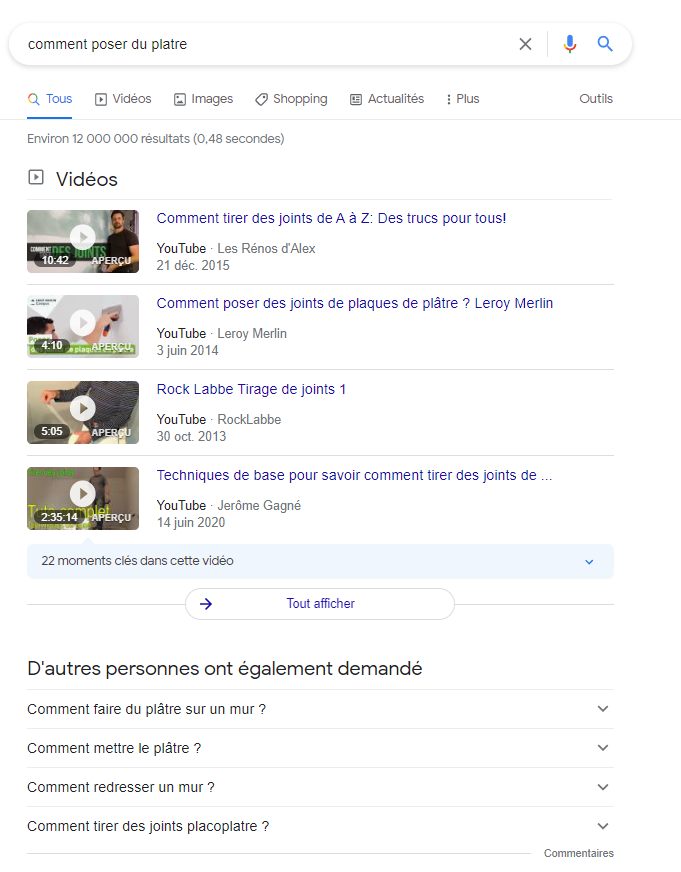
The expected results are varied and will contain textual content, videos, or images.
How do I optimize my site for informational search intent?
- Answer the search intent quickly. We often see lengthy articles where the first 1000 words answer everything but the initial search intent. It's as if the goal was to write as many words as possible rather than answering the question qualitatively.
Always ask yourself if each sentence you propose adds value to your article and avoid discussing all the side topics related to the chosen subject. - Optimize your tags to match the search intent. As much as possible, make sure your title tag and H1 tag almost exactly match the search intent for which you want to optimize your content.
These tags are mainly used to help Google understand the subject of your article and the terms you want to rank for. By optimizing them, you increase your chances that Google will understand your topic and place you in the top search results. - Optimize your site for mobile. It's been no secret for a long time. Visits from mobile devices have surpassed traffic from computers for several years.
Make sure your site is easily accessible from mobile, adapted to the most popular screen sizes, that your site's loading time is optimal, and that viewing your content is not hindered by pop-ups. - Make sure the type of content you offer is the type of content expected by the user. If we take the previous example "how to install drywall?", you will see that most of the top results are video results. Google knows that users expect to see a demonstration when they do this kind of search. So, don't hesitate to analyze the proposed results and vary the types of content when necessary.
Transactional searches
What is a transactional search?
These are searches aimed at leading to a purchase. Google will most often offer search results featuring merchant sites. These searches can be very varied and cover a wide range of sectors.
Here are some examples:
- Samsung Galaxy S20
- Montreal-New York flight
- Children's book
- Wedding dresses
For this type of search, you will often see merchant results like Google Shopping. By keeping this tip in mind, you can easily recognize that it is a transactional search intent and optimize your content accordingly.

How do I optimize my site for transactional search intent?
Unsurprisingly, transactional searches aim to lead to a transaction. The user is in "purchase mode," ready to convert. The content you present to them should allow them to quickly understand the product or service you offer and effectively guide them to the final transaction page. Here, the optimization is similar to the SEO optimization you need to do for a product page.
Here are some best practices to follow for this type of page:
- Make sure the content of the page is clear. Your product name should be clearly indicated at the top of the page. Ideally, you should indicate a product name that corresponds to keywords. Avoid names like "Children's book ref AHWK524" and replace with "Children's book - Ages 1 to 5 - Caillou Goes to the Beach."
- Use appropriate language that will encourage sales. We are on a conversion page, so we want to include relevant vocabulary. Don't hesitate to use words like: order, discount, promotion, buy, book, price, slashed price, limited time, registration, etc.
- Work on the images. Your images should be optimized for SEO with appropriate ALT tags, but they should also be of good quality to encourage the user to convert. They should also clearly represent your product. Don't hesitate to include more rather than less. We want to see your product from all angles.
- Add calls to action. In addition to the "product page" vocabulary that your content should include, you should also insert clear calls to action, well positioned in your content, and in a differentiating color. This will help Google understand that it is a transactional page.
- Add content. Transactional pages are often extremely poor in terms of content. We often hear the urban legend that users don't read the content of a product page. However, it seems to me that when we are about to buy a product, we want to know as much as possible. Include more rather than less and work with a web designer to properly arrange the content on the page.
Commercial searches
What is a commercial search?
Commercial searches are similar to transactional searches in that they ultimately lead to a purchase. They are searches with the intent to gather information in order to make the best possible purchases.
- Best smartphone seller
- What is the best airline to fly to New York?
- How to choose the right bike?

How do I optimize my content for commercial search intent?
In this specific case, the user is looking for information on a product with the intention of buying it. They will therefore be interested in content such as comparisons, testimonials, reviews, case studies, etc.
- Use an appropriate article title. As with informational search, the article title you choose is extremely important. We want to quickly understand that it is a commercial-oriented content, so include words like: ranking, comparison, best, top 10, test, etc. in the title of your page.
- Create internal links to your transactional content. The goal of your content is ultimately to lead to a sale, so link to your products. Be careful to do it naturally so that the user doesn't feel that the purpose of your content is to manipulate them.
- Guide your users to the next sales steps. Once again, your goal is to subtly encourage users to buy, so make it easy for them and tell them how to do it. This will also allow you to add transactional vocabulary to your content.
Why is search intent important in SEO?
Now that we've explained how to optimize your content for different types of search intent, here's a reminder of how Google works and the impact of search intent on SEO.
What is Google's goal?
Understanding Google's goal is always very useful when talking about search intent. For the search engine, the objective is to offer the content that best answers the user's initial search so that they can quickly find answers to their questions.
Regarding search intent specifically, Google's goal is to guess the question you have in mind without you having to type all the subtleties in the search bar. That's why this concept is so important in SEO. If Google can understand this intent well, it will offer appropriate results.
For example, when a user searches for "activities Montreal," the algorithm can tell that the most successful results are those that present a certain number of tourist activities.

How does Google guess users' search intent?
With more than 80,000 searches made per second, Google has a huge database and all the technological means to analyze it in order to identify trends. The search engine regularly tests, offers different types of results based on the queries made, and analyzes user behavior to determine if the proposed results are suitable.
- Did users click on a result or did they immediately perform a new search?
- If the user clicked on a result, did they stay on that page or did they return to the search engine to find another result?
- Which search result did they click on? Maps, video, news?
- If the user performed a new search, how did they refine their search?
All these questions can be answered by analyzing search data. This is what allows Google to offer the best possible results.
If we take the example mentioned earlier "activities Montreal," several search intents are possible. Here are two examples:
- The user lives in Montreal and is looking for activities to do in Montreal to keep busy
- The user lives in Montreal and wants to visit Montreal
- The user lives outside of Montreal and is planning a trip to Montreal
When a search can lead to several search intents, Google will offer answers adapted to as many search intents as possible, highlighting the searches that have "historically" been most successful.
In the previous example, the first results show activities to do in Old Montreal, others show events, others show tourist activities, etc.

Don't wait any longer and optimize your content by taking search intent into account.
By providing the appropriate content (and optimizing it), the click-through rate on your search results should increase. Google will then understand that your content is relevant and more interesting to users than other proposed results. It should therefore better position the pages of your website that are optimized and relevant.
One, two, three... Optimize 😊.
Need to go further?
If you need to delve deeper into the topic, the editorial team recommends the following 5 contents:
